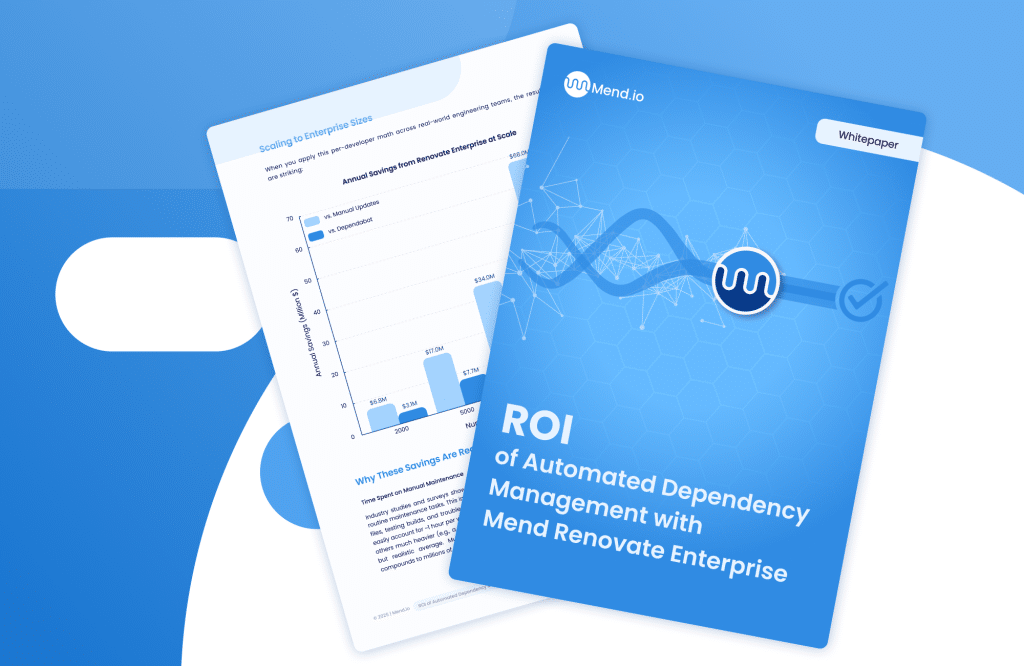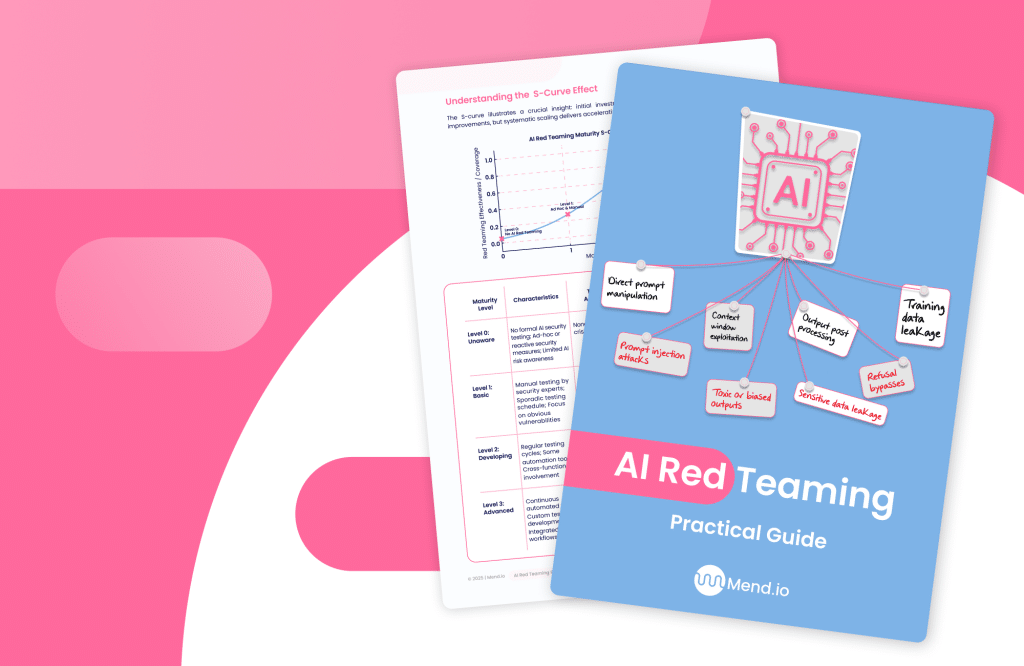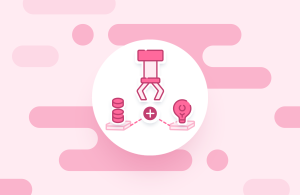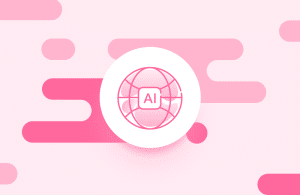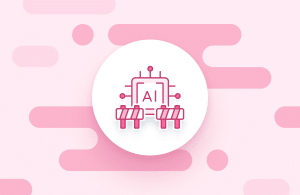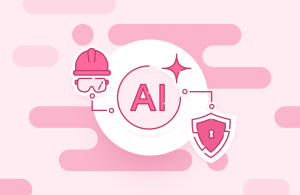Table of contents
58 Generative AI Statistics to Know in 2025

Generative AI is no longer a niche technology — it’s reshaping industries, workflows, and even entire markets. But with the surge in adoption comes new questions about impact, risks, and security. To ground the conversation in facts, we’ve pulled together the most important statistics you need to know about generative AI in 2025. This blog post is part of a series of articles about LLM security.
The generative AI revolution
Over the past few years, generative AI has moved from research labs into mainstream industries, reshaping how people interact with technology. Advances in deep learning, especially transformer models, allowed systems like ChatGPT and Stable Diffusion to generate human-like text and realistic images. These breakthroughs sparked widespread interest because they showed that AI could create content, making it useful in writing, design, and coding.
The accessibility of generative AI through developer integrations and user-friendly tools led to rapid adoption across sectors. Businesses started using AI to automate tasks like drafting emails, summarizing documents, and generating marketing materials—capabilities that also make these systems vulnerable to prompt injection and data manipulation if not properly secured.In creative fields, designers and writers began collaborating with AI to brainstorm ideas or speed up production.
These tools lowered the barrier to entry for non-technical users, broadening the base of AI adopters and increasing productivity in routine workflows—accelerating trends tracked in our OWASP Top 10 for LLM applications guide, which highlights the security challenges that come with scaling AI usage. This shift also triggered major changes in business models and digital ecosystems. Companies began rethinking how value is created and delivered, with AI now acting as a co-creator. At the same time, concerns around data privacy, intellectual property, and misinformation grew, fueled in part by increasing evidence of bias in generative AI that can distort or misrepresent outputs. As generative AI continues to evolve, organizations are adapting not only their operations but also their policies to address the risks that come with powerful content-generation tools. These issues fall under the broader field of generative AI security, which focuses on the unique threats created by generative systems.
Key generative AI statistics
Generative AI market size and growth
The global generative AI market is currently valued at $44.89 billion, up from $29 billion in 2022, representing a 54.7% increase in three years (Statista) Here are a few more stats illustrating its explosive growth:
- The market is expected to exceed $66.62 billion by the end of 2025, with the U.S. contributing over $23 billion of that total (Statista)
- Long-term forecasts estimate the generative AI market could reach $1.3 trillion by 2032, driven by software, infrastructure, hardware, and digital advertising revenue (Bloomberg Intelligence)
- Software revenue alone from generative AI could generate $280 billion by 2032, growing at a 42% compound annual growth rate (CAGR) (Bloomberg Intelligence)
- North America dominates the current market with a 40.8% share of global generative AI revenue in 2024, attributed to the concentration of leading tech firms in the region (Grandview Research)
- ChatGPT, a leading product in the market, had over 800 million weekly users and 4.6 billion monthly visits, according to web traffic data (Semrush)
Leading tools and competitive landscape
Generative AI is dominated by a few major players, but competition is growing quickly across the consumer and enterprise space.
- ChatGPT remains the dominant tool with 62.5% of the consumer AI tool market as of late 2024 (Backlinko 2025)
- In March 2025, ChatGPT had 525.9 million unique visitors, dwarfing Claude’s 15.1 million (Semrush Traffic Analytics)
- ChatGPT referrals to other websites tripled from under 10,000/day in July 2024 to over 30,000/day by November 2024 (Semrush)
- Claude, Gemini, and DeepSeek trail behind ChatGPT, but DeepSeek surpassed the others in traffic as of January 2025 (Semrush)
- OpenAI is seeking a $300 billion valuation as of early 2025 (Investopedia 2025)
- By late 2024, almost 90% of major AI models were developed by industry rather than academia (Stanford)
Business adoption of generative AI
Adoption rates across industries show that generative AI is becoming a mainstream business tool rather than a future concept.
- 92% of Fortune 500 companies are using OpenAI technology, including over 2 million developers working with its API (Financial Times)
- 94% of executives believe AI will be critical to business success within five years (Deloitte)
- 64% of tech businesses plan to adopt generative AI (Google)
- 45% of companies are actively piloting generative AI programs, up from 15% earlier in 2023 (Gartner)
- 73% of marketing departments already use generative AI, primarily for image and text generation (Botco)
- 86% of IT leaders expect generative AI will soon be essential to their organization (Salesforce)
- 78% of executive leaders believe the benefits outweigh the risks (National CIO Review)
Impact on the labor market and workforce
Generative AI is transforming job functions—automating some tasks, displacing others, and creating demand for new skill sets.
- 84% of U.S. LinkedIn members are in jobs where at least a quarter of repetitive tasks could be done by generative AI (LinkedIn)
- The Bureau of Labor Statistics projects that nearly 10% of jobs in the U.S. are at high risk of being replaced by generative AI by 2029 (BLS)
- AI may replace 85 million jobs but create 97 million new ones by 2025 (We Forum)
- Just 3% of software engineering skills are resistant to automation, while over 88% of driving and nursing skills are considered resistant (LinkedIn)
- 25% of companies are using AI to deal with labor shortages (IBM)
- Generative AI may automate 30% of total work hours by 2030 (McKinsey)
Generative AI by demographics
Adoption patterns vary widely by age, gender, and geography, with younger users driving usage trends.
- 70% of Gen Z have used generative AI tools (Salesforce)
- 65% of users are Gen Z or Millennials; 72% are employed (Salesforce)
- Men are more than twice as likely as women to use generative AI tools (Forbes)
- 31% of men are comfortable letting their children use AI tools; only 4% of women say the same (Axios)
- 70% of non-users would consider using generative AI if it were safer and more integrated (Salesforce)
- National usage rates: 73% in India, 49% in Australia, 45% in the U.S., and 29% in the U.K. (Salesforce)
Industry-specific adoption and use cases
Generative AI is being customized for specific industries, with applications ranging from supply chain optimization to customer service automation.
- Retail AI adoption is growing at a 39% CAGR, with applications in CRM, pricing, and security (Facts & Factors)
- 95% of customer interactions could be AI-assisted by 2025 (AI Business)
- In healthcare, 100% of CIOs plan to implement AI by 2026, and 79% expect to adopt genAI (Gartner)
Investment trends in generative AI
Private and institutional investment in generative AI is accelerating despite broader market slowdowns.
- Total investment in generative AI jumped 407% from 2022 to 2023, reaching $21.8 billion across 426 deals (CB Insights)
- Private equity funding increased by 118%, hitting $2.18 billion in 2023 (S&P Global)
- Investment in AI overall could reach $200 billion by 2025 (Goldman Sachs)
- 43% of billion-dollar U.S. firms plan to invest $100 million or more in generative AI (KPMG/WSJ)
Workplace usage and productivity gains
Generative AI is enabling measurable productivity gains across a range of business functions.
- Chatbots save 2 hours 20 minutes per day on average (HubSpot)
- Programmers using generative AI are 88% more productive, especially on repetitive tasks (Github)
- AI tools helped management consultants complete tasks 25% faster and with 40% higher quality (Harvard Business Study)
Marketing and sales transformation via GenAI
Marketers and sales professionals are using generative AI to streamline operations and create personalized content.
- 76% of marketers use genAI for content creation, 71% for creative inspiration, and 63% for analyzing market data (Salesforce)
- 84% of sales professionals using genAI report increased sales performance (Salesforce)
- 61% of sales pros believe genAI helps them sell more efficiently and serve customers better (Salesforce)
- Sales reps using AI most commonly apply it for content creation (82%) and personalized communication (71%) (Salesforce)
Barriers and risks of adoption
Despite enthusiasm, businesses face challenges around security, infrastructure, skills, and cost.
- 58% of organizations cite cybersecurity as the biggest adoption barrier (Searce). Organizations are increasingly turning to specialized AI security tools to manage these risks and reduce false alarms.
- 55% are concerned about data governance and management (Searce)
- 50% of marketers say team training is the biggest hurdle (Botco)
- 62% of executives lack the skills to implement genAI strategies (Google)
- Deepfake-related fraud has surged 1,200% in the U.S. and 4,500% in Canada between 2022 and 2023 (BusinessWire)
- 27.2% of companies don’t trust genAI outputs (AI Accelerator Institute)
Ethics, trust, and regulatory needs
The rapid adoption of generative AI has raised significant ethical and trust concerns.
- 59% of workers worry genAI outputs are biased; 54% say they’re inaccurate (Salesforce)
- 73% believe genAI introduces new security risks (Salesforce). Strong AI guardrails help mitigate these risks by constraining model behavior and preventing harmful outputs.
- Only 13% of businesses have hired AI ethics specialists (McKinsey)
- 60% of companies using AI have no ethical AI policy; 74% don’t address bias (IBM)
Future outlook and predictions
Looking ahead, generative AI is expected to become deeply embedded in business operations and everyday life.
- By 2026, 90% of online content may be AI-generated (Europol)
- GenAI could add $4.4 trillion annually to global GDP, equaling the output of six G8 nations (McKinsey)
- AI may autonomously build 15% of new applications by 2027 (Gartner)
- The global genAI market could be worth $1.3 trillion by 2032 (Bloomberg Intelligence)
Securing generative AI applications with Mend.io
Generative AI is transforming industries, but it also transforms software security as it creates new risks—from prompt injection to bias in generative AI and vulnerabilities detailed in the OWASP Top 10 for LLM applications. The same AI models and AI components that enable faster content creation and coding also introduce risks around data leakage, supply chain vulnerabilities, bias, and prompt manipulation. Organizations adopting generative AI at scale can’t afford to treat security as an afterthought—it must be built around a modern generative AI security framework.
That’s where Mend.io’s AI Native AppSec Platform comes in. Built to secure both AI powered applications and Generative AI code, Mend.io provides:
- AI Component Inventory – Automatically discovers and maps the AI models, agents, MCPs and RAGs embedded in your applications. This includes managing retrieval-augmented generation pipelines, which can introduce risks if external data sources aren’t secured. See our guide on RAG security for details. Unmanaged Model Context Protocol (MCP) servers can create hidden data paths and security blind spots. Our post on MCP security explains the challenge.
- AI Component Risk Management – Automatically enrich all AI components with known security vulnerabilities and license information. Protecting the models themselves from theft, inversion, and manipulation is just as critical. See our guide to AI model security for practical strategies
- Policy Governance – Enforces organizational rules around how AI tools are selected, integrated, and used, reducing compliance and IP risks.
- System Prompt Hardening – Mitigate injection attacks and prevent malicious prompts from manipulating outputs or exposing sensitive data.
- AI Red Teaming – Continuously stress-tests AI models’ behavior with real-world adversarial attacks, surfacing weaknesses before attackers do.
By securing AI components end-to-end, from code to runtime, Mend.io enables companies to adopt generative AI with confidence. The result is faster innovation without sacrificing trust, compliance, or safety.
